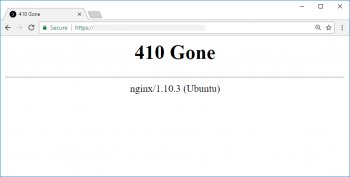Reboot CentOS 8 - Different methods to do it ?
This article will guide you on the different methods to reboot a #CentOS system which includes the keyboard shortcut, command line, and GUI based methods.
There's nothing different in running sudo reboot in a instance versus on your own server. This action shouldn't cause any problems.
You can shutdown/start/reboot the instance and your data will persist.
When used with no arguments, the shutdown command will power off the machine. sudo shutdown.
The shutdown process starts after 1 minute, which is the default time interval.
It is recommended that you do a #reboot of your Server at least once per month.
The Dedicated Hosting Servers are just computers, you would not leave your computer on for months straight without a single reboot, so the same rules apply for servers.
To reboot your Linux Server via #SSH:
1. Open Command Prompt. If you have a graphical interface, open the terminal by right-clicking the Desktop > left-clicking Open in terminal.
2. Use SSH Connection Issue reboot Command. In a terminal window, type: ssh –t user@server.com 'sudo reboot'.
Install VirtualBox on Ubuntu 20.04 LTS - Step by step process ?
This article will guide you on the different methods to #install #VirtualBox on Ubuntu 20.04 system. Now, you can create your first guest Linux machine or Windows environment on your Ubuntu system.
#Xen is a popular, open-source virtual machine application that is officially supported by #Ubuntu.
It provides high performance, but only supports a small number of host and guest operating systems.
Ubuntu is supported as both a host and guest operating system, and Xen is available in the universe software channel.
If you want to explore more about the working of the Virtualbox then, you can visit the Official documentation of Virtualbox use from this page .
VirtualBox can be installed on #Windows, Linux, macOS, Solaris, and FreeBSD.
To find the #Linux version:
1. Open the terminal application (#bash shell).
2. For remote server login using the ssh: ssh user@server-name.
3. Type any one of the following command to find os name and version in Linux: cat /etc/os-release. lsb_release -a. hostnamectl.
4. Type the following command to find Linux kernel version: uname -r.
NTP Server and Client on Ubuntu - How to Configure it ?
This article will guide you on how to configure the #NTP server on Ubuntu. You will learn how to configure the NTP client on another #Ubuntu machine and synchronize it with the NTP server. By means of this, you can easily synchronize all system clocks in a network.
The Network Time Protocol (NTP) is a networking protocol for clock synchronization between computer systems over packet-switched, variable-latency data networks.
NTP is intended to synchronize all participating computers to within a few milliseconds of Coordinated Universal Time (UTC).
To Configure NTP server:
1. Install NTP Server. First, install NTP package on your server using the appropriate package management tool that is available on your Linux distro.
2. Setup Restrict values in ntp. conf.
3. Allow Only Specific Clients.
4. Add Local Clock as Backup.
5. Setup NTP Log Parameters.
6. Start the NTP Serrver.
To Configure NTP client:
1. To configure your Linux system as an NTP client, you will need to install the ntp daemon (ntpd).
2. The ntpd configuration file is located at /etc/ntp.conf.
3. This file contains the list of NTP servers that will be used for time synchronization.
4. Next, restart the NTP deamon with the sudo service ntp reload command
Methods to Find your Private IP Address in Debian 10 ?
This article will guide you on the different methods through which you can easily figure out the private IP #address of your Debian 10 system.
The network statistics ( netstat ) command is a networking tool used for troubleshooting and configuration, that can also serve as a monitoring tool for connections over the network. Both incoming and outgoing connections, routing tables, port listening, and usage statistics are common uses for this #command.
To find out the #IP address of #Linux system, you need to use the command called ifconfig on #Unix and the ip command or hostname command on Linux.
To get you the private IP address of your interfaces:
i. ifconfig -a.
ii. ip addr (ip a).
iii. hostname -I | awk '{print $1}'.
iv. ip route get 1.2.
v. (Fedora) Wifi-Settings - click the setting icon next to the Wifi name that you are connected to - Ipv4 and Ipv6 both can be seen.
vi. nmcli -p device show.
Different methods to Reboot Ubuntu 20.04 LTS ?
This article will guide you on the different methods through which you can effectively reboot your #Ubuntu 20.04 system without any difficulty.
To #reboot immediately, append the -r flag: $ sudo shutdown -r now.
To power down immediately: $ sudo shutdown -P now.
You can use the poweroff #command: $ poweroff.
To reboot after 10 minutes: $ sudo shutdown -r 10.
To reboot Linux using the command line:
1. To reboot the Linux system from a terminal session, sign in or "su"/"sudo" to the "root" account.
2. Then type " sudo reboot " to reboot the box.
3. Wait for some time and the Linux server will reboot itself.
Display System and Hardware Details in CentOS 8 - How to do it ?
This article will guide you on different methods to retrieve information about your #Linux system and the underlying #hardware devices. These procedures will help you check the specifications of your computer machine and you can easily know either the hardware device or computer software is compatible with your working system or not.
The Linux kernel is the main component of a Linux operating system (OS) and is the core interface between a computer's hardware and its processes.
To find system information in #Centos:
1. To know only system name, you can use uname command without any switch will print system information or uname -s #command will print the kernel name of your system.
2. To view your network hostname, use '-n' switch with uname command as shown.
3. To get information about kernel-version, use '-v' switch.















